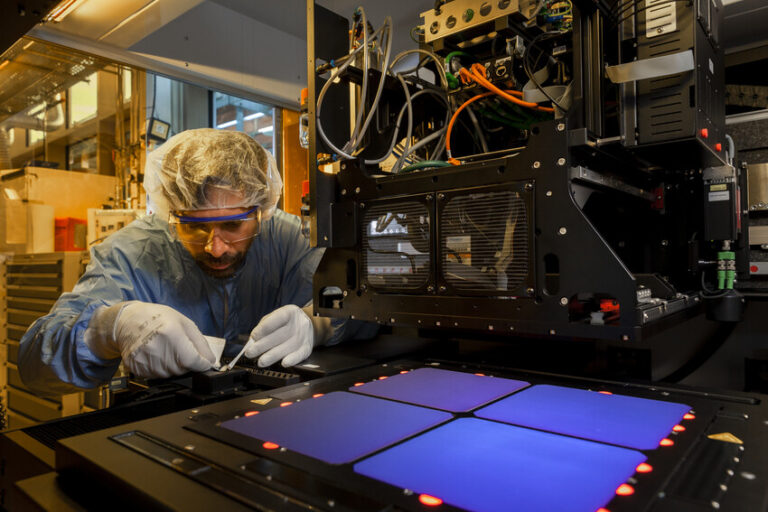The German research institute says it is currently investigating three copper metallization methods: screen printing, FlexTrail printing and rotary printing. The proposed technology is reportedly compatible with TOPCon or heterojunction bottom cells.
Researchers at the Fraunhofer Institute for Solar Energy Systems ISE (Fraunhofer ISE) in Germany are developing copper metallization technology to avoid the use of silver in perovskite-silicon tandem devices.
“Basically, we will develop a perovskite-silicon tandem device using printed copper instead of silver. ISE’s exclusive FlexTrail printing technology will be essential. We are working with partners from PV and printed electronics to create a technological advantage for PV production in Europe,” said Roman Keding, head of the printing technology group within the Fraunhofer ISE Photovoltaics division. pv magazine.
The project, known as Kumelle, will explore three copper metallization methods: screen printing, FlexTrail printing and rotary printing. The rotary printing research will focus on two variants: flexographic printing and indirect gravure printing.
The proposed technology is reportedly compatible with TOPCon or heterojunction bottom cells. “Everything will be validated and demonstrated in Fraunhofer ISE’s PV-TEC and the Pero-Si SCALE technology platform,” said Keding, referring to the perovskite-silicon tandem research scale facility that was launched in 2023 to provide researchers with manufacturing, characterization and analysis tools and technology.
“We expect a Technology Readiness Level (TRL) of 6,” said Keding. The TRL measures the maturity of technological components for a system and is based on a scale of one to nine, with nine representing mature technologies for full commercial deployment.
The project has received €3.2 million ($3.3 million) in funding from the energy research program of the Federal Ministry of Economic Affairs and Climate Action (BMWK).
The project partners are Germany-based acp systems AG, ContiTech Deutschland Center for Functional Printing Technologies, Elantas Europe GmbH, Eckart GmbH, Saralon GmbH. There are two more associated partners: Qcells Technology and Innovation Center in Germany and Israel-based PV Nanocell.
Earlier this year, the same Fraunhofer group demonstrated the use of indirect intaglio printing for metallization of silicon heterojunction solar cells.
This content is copyrighted and may not be reused. If you would like to collaborate with us and reuse some of our content, please contact: editors@pv-magazine.com.


